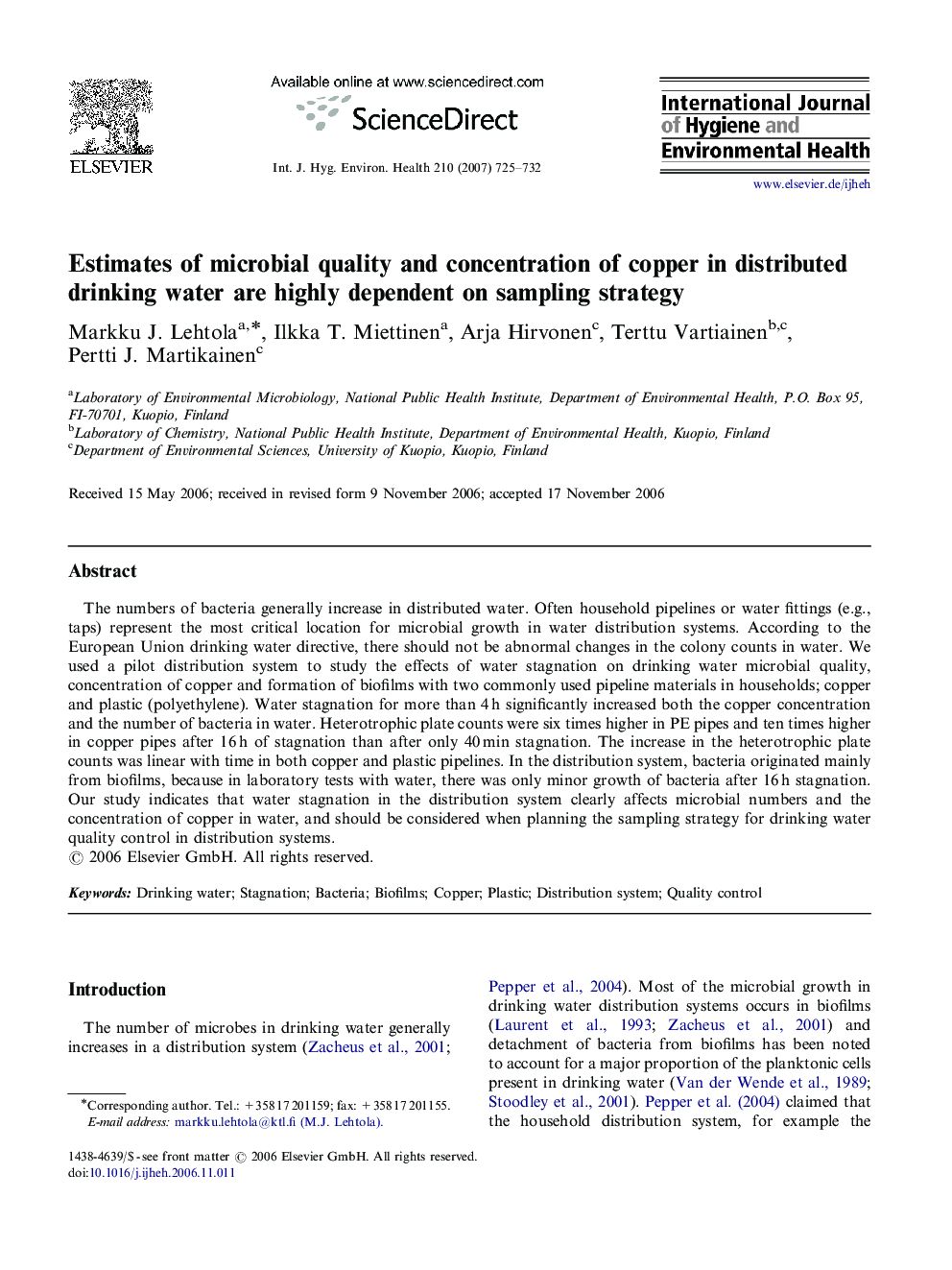| Article ID | Journal | Published Year | Pages | File Type |
|---|---|---|---|---|
| 2589167 | International Journal of Hygiene and Environmental Health | 2007 | 8 Pages |
The numbers of bacteria generally increase in distributed water. Often household pipelines or water fittings (e.g., taps) represent the most critical location for microbial growth in water distribution systems. According to the European Union drinking water directive, there should not be abnormal changes in the colony counts in water. We used a pilot distribution system to study the effects of water stagnation on drinking water microbial quality, concentration of copper and formation of biofilms with two commonly used pipeline materials in households; copper and plastic (polyethylene). Water stagnation for more than 4 h significantly increased both the copper concentration and the number of bacteria in water. Heterotrophic plate counts were six times higher in PE pipes and ten times higher in copper pipes after 16 h of stagnation than after only 40 min stagnation. The increase in the heterotrophic plate counts was linear with time in both copper and plastic pipelines. In the distribution system, bacteria originated mainly from biofilms, because in laboratory tests with water, there was only minor growth of bacteria after 16 h stagnation. Our study indicates that water stagnation in the distribution system clearly affects microbial numbers and the concentration of copper in water, and should be considered when planning the sampling strategy for drinking water quality control in distribution systems.
